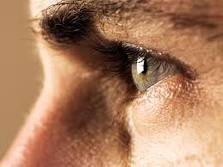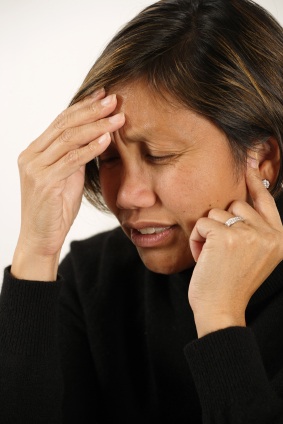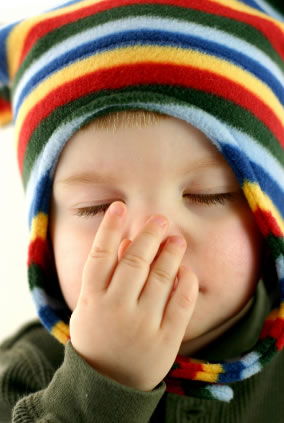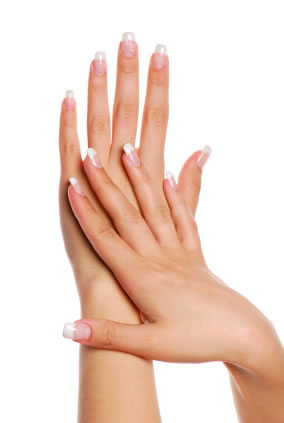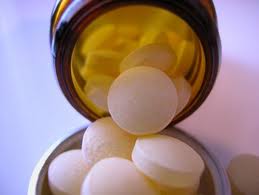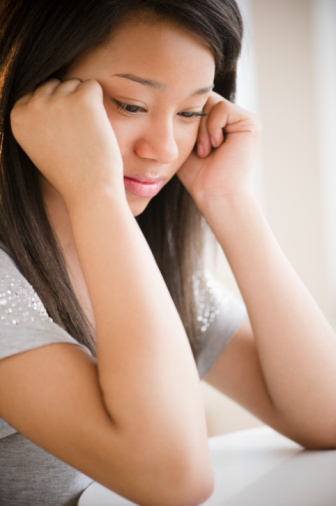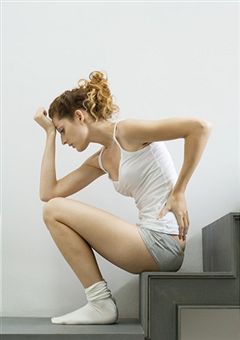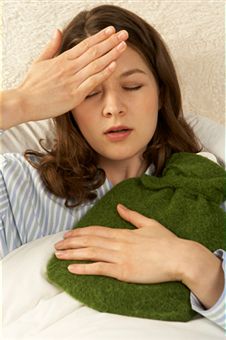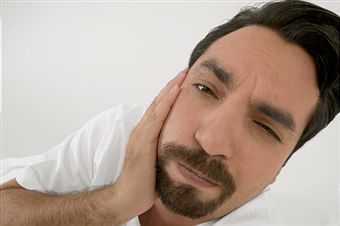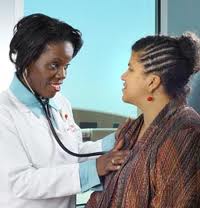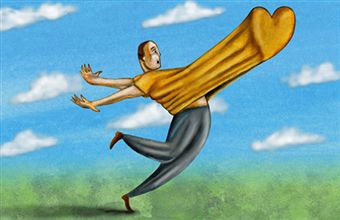Chafing is a very common problem that touches almost all people. Chances are that nearly everybody is familiar with what chafing is and has experienced it at some point in life. Though it is very annoying to have to deal with chafing, it is more of a discomfort than a serious medical problem in most cases. It is relatively simple to prevent chafing and even easy to remedy once it has become a problem. It is very rare that chafing seriously harms anyone.
By definition, chafing is almost more of a symptom of other problems than it is its own medical dilemma. It is a symptom of diaper rash, jock itch, and many other rashes. However, chafing is a problem in and of its own right for many people, and is not as severe as the rashes and conditions it is a symptom of. Chafing is the rubbing of the skin against something (clothing, other skin, etc.) in such a way as to cause friction. This action wears down on our outer-most protective layer of skin and it becomes sore and irritated as a result. Luckily, this is as easy to prevent as it sounds!
Symptoms
Symptoms of chafing may include skin that has turned pink or even red in more severe cases. Chafing usually becomes suddenly apparent to those affected via a burning sensation or stinging around the chafed area. The skin that has been subject to chafing will very likely be flakey and worn thin at the least and worn off entirely in the worst cases.
Causes
The cause of chafing is easy to understand. Basically, any kind of rubbing against the skin can irritate it and thus create chafing. This means there are many different things that can lead to chafing.
Literally any activity that calls for constant skin-on-skin rubbing can cause chafing. The same goes for any activity that causes the skin to rub against an object or repeatedly be rubbed by the fabric of clothing. The possibility for and severity of chafing only becomes worse when moisture is added.
Risk Factors
Those who are most obviously at risk for chafing are the highly physically active and the overweight, two groups who would normally have not much in common. In the case of athletes, any kind of poor fit in uniform can cause the skin to rub against the fabric of the uniform and cause chafing. As mentioned before, introducing moisture to the equation only intensifies chafing and makes it worse. Athletes tend to work out quite a bit and sweat profusely while doing so.
In overweight and obese people, skin often rubs against other skin in situations where people of average weight would not have to worry about this. The most common example of this is the fact that overweight people have much more thigh-on-thigh contact and thus rubbing and friction than does an average person. Though this is more prevalent in those who are overweight, it can happen to anybody.
Overweight Risk Factors
Overweight people tend to become hot more quickly than smaller people and thus they sweat more easily. Athletes expect that they will produce large quantities of sweat and do so often, but it is impossible to predict when an overweight person might unexpectedly sweat and create an uncomfortable rubbing that can only be alleviated by changing clothes. If this happens while the overweight person is busy with work, school, or any number of other things that could prevent him/her from changing clothes, s/he could be stuck with sweaty areas that are primed to cause some painful chafing throughout the day. Ouch!
Where Chafing Occurs
Common areas for chafing include the thighs, under arms, and breast area. In the thighs and crotch region, the chafing can occur because of thighs rubbing against one another or because of fabric rubbing against the upper inner thigh. This rubbing is caused by the person in question moving. Running, walking, peddling, etc. are all things that could cause thigh or crotch region chafing.
The same goes for the under arms. This area is so common because of the fact that so many activities require bodily movements that might cause chafing of the under arms. This happens when the inner arms rub against the sides of the chest. Physical exercises such as lifting weights, rowing, and repetitive aerobics can cause chafing, but there are many every-day activities that are repetitive in nature and can also chafe this area. Even an average desk job will have people reaching for papers often and passing things around!
Chafing around the area of the breasts is a problem for women especially though it is not limited to just women. The breasts themselves can rub against the skin of the chest and cause painful chafing if a proper bra is not worn, but wearing ill-fitted bras can cause chafing as well! The fact is that with such a huge range of activities that can cause skin to rub against other skin or against something else, it is a safe bet to say that any person who regularly moves around is at risk for chafing.
When To Visit The Doctor
In all reality, most chafing will never require any more than some tender loving care and rest time. However, chafing can be dangerous if it is not handled correctly. Chafing can end up being so severe that the skin becomes entirely rubbed away and what remains oozes blood and can become easily infected. Because chafing is so easy to handle and prevent, this should almost never happen, but it should not be taken lightly in cases where it does.
It is recommended that in cases where the rubbing, friction, or other cause of chafing is stopped and the chafed area does not improve within two days, medical help should be sought. The primary reason for this is that if there is no improvement, it is highly likely that the chafing has developed into something more than simply a skin irritation. The most common development is a fungal infection within the chafed area of skin. In reality this makes sense, as fungi thrive in moist and unclean areas such as those provided by athletes’ uniforms if they are not very thoroughly cleaned on a regular basis and kept clean.
Damaging Skin
Chafing erodes away the outer layer of skin that is vital to protecting a person’s skin (the largest organ in the body!) from harm. If the chafed area is not kept clean, a fungal infection could very easily occur. This is not cause for extreme alarm but it will take specific medicines to clear up and so should be discussed with a doctor. Be careful when trying to self-assess that the cause for persistently chafed skin is fungal; doing so can help a person be more frugal and avoid unnecessary medical costs, but if a fungal infection is not the reason for the lack of recovery, the medicines used to treat it could further irritate the chafing and create more problems.
Preparing For Appointment
If two to three days have passed and the chafing is not improving or is worsening, it is a good idea to make an appointment with a doctor and have it looked at. Mayo Clinic support staff have the following tips to help you prepare for the appointment. First, write down symptoms.
Being able to provide the doctor with a written report of what developments have happened and how long symptoms have persisted will ensure that neither one of you forgets anything potentially vital. Included in this written report should be any key personal information that relates to the chafing injury such as required movements that make it worse, anything that stresses it, etc.
With any doctor’s visit, a list of medical information should be made. Doctors always need to know what other medications or conditions their patients might be dealing with so that they do not prescribe treatments which interfere with them. It is very important that no key details are left off of the list. In addition to this, a list of questions can be written down so that no question is forgotten. For most people, getting an appointment with the doctor is not an immediate thing. There is a wait time between the request and the actual visitation. In this wait time, there are things that can be done to at least stop further chafing and possibly soothe the currently chafed area.
Treatments & Drugs
There are many very useful and effective over the counter medications for treating chafing and the fungal infections that can plague those who suffer from chafing. Chafed skin in and of itself is a very simple problem to solve. The first step is always to stop the chafing immediately. Whatever it is that is rubbing against the skin should be fixed so that it does not do so any longer. This will prevent further damage.
Basic Treatment
After the cause of the chafing is identified and stopped, the chafed area should be cleaned thoroughly by washing with a gentle anti-bacterial soap and a soft wash cloth. It is important to pick a gentle soap and use a soft washcloth because more stringent soaps and rougher washcloths can further irritate the chafing, which is the direct opposite of what should be achieved.
The next step is to cover the chafed area with gauze. Gauze is chosen because of its airy nature; it lets the chafed area get much-needed oxygen while minimizing contact between it and fabric or other objects. Gauze also tends to stay put more easily than other fabrics that could be used to cover the chafing, but it can be too loosely or tightly applied just as any other cover could, and in this case it could chafe the already damaged skin further. In order to prevent this, the person covering the chafed area should refrain from letting it come into contact with anything as much as possible.
This basic form of care should vastly improve most cases of chafing and the chafed skin will be fully healed or well on its way to it within a few days. If this is not the case, a trip to the doctor will usually identify a fungal infection as the cause for the continued symptoms. Fungal infections are very common and are not at all something to be extremely concerned about. In fact, most doctors will simply identify the infection and recommend an over the counter fungal treatment option. It is rare that prescription-strength medicines are needed to cure a fungal infection of any sort.
Dermatophyte Infections
“Dermatophyte infections” is the medical term that covers fungal infections. Three different fungi comprise the group of dermatophytes responsible for much skin disease in humans and animals. There are many different over the counter remedies for dermatophyte infections. Three of the most popular names in fungal infection treatment are Lamisil, Tinactin, and Lotrimin. All three are very powerful anti-fungal treatments but they have different active ingredients and work in different ways.
Lamisil’s main ingredient is terbinafine. Terbinafine is used to treat fungal infections of all sorts but is often specifically used against dermatophytes because it is especially effective against them.
Lamisil is available in tablet form (250 mg tablets) and in cream form. The cream version is an over the counter remedy while the tablet requires a doctor’s prescription to obtain. Overall, terbinafine is said to be quite a safe drug with very few side effects that arise only occasionally. These include the basic nausea, diarrhea, headache, dizziness, and loss of appetite. It is also non-volatile and does not enhance other medications or react badly with most of them.
Tinactin
Tinactin’s main ingredient is tolnaftate. It actually works much the same way as Lamisil. Both medicines work by blocking enzymes that allow the fungal intruders to grow and reproduce on the skin. Tolnaftate blocks a different enzyme than does terbinafine and is generally stated to be less effective but only by a slight margin.
Lotrimin uses clotrimazole as its main ingredient. Clotrimazole is known to alter the reactions of other drugs and is highly reactive with many. The effect could be that a particular drug is inhibited because of the use of Lotrimin, or compounded.
In addition to this, the side effects of Lotrimin are listed as irritation of the application area and potential redness and itchiness. If a patient is considering using an over the counter anti-fungal cream to treat chafing, it is important to be sure that no other medications (even those such as vitamins) are being taken simultaneously.
Alternative Medicines
There are a large number of alternative means of treating chafing. These will probably be what most people turn to, as chafing does not usually require advanced medical treatment. The first is to use Vaseline on areas that are chafed or in danger of chafing. Once a thin layer of Vaseline is in place to protect the chafing from infection, a layer of talcum powder can be applied over the top. Talcum powder sticks to the Vaseline and keeps it from sticking to clothing and also reduces friction. Cornstarch powder would also work, as would Noxema for applying directly to the skin.
Many people have recommended home-made pastes that will help cure current chafing and protect the skin from further chafing without having to stop activities entirely that may have caused it. One such remedy is zinc oxide paste. Applying this to areas that tend to chafe or are chafed will protect them from chafing and the paste itself does not easily come off so it will not stick to clothing. In order to wash it off, a washcloth soaked with olive oil must be used.
Homemade Lubricants
Another idea is a homemade lubricant made out of Vitamins A and D oil mixed with Vaseline, aloe, and Vitamin E cream. The Vaseline and aloe will soothe chafed skin and the vitamins help build the skin to prevent future chafing. Calendula oil is another popular natural choice. The oil is naturally anti-bacterial, anti-fungal, and anti-inflammatory and so is a prime choice to help heal chafing and keep skin from becoming more irritated. It is easily cleaned off with water and should be applied just after showering.
Prevention
Chafing is largely a preventable problem and there are many things that can be done to protect skin so that it never happens. The first is to stay hydrated. Dehydrated skin is dry and dry skin chafes much more easily. The second major tip is to make sure to wear clothing that is well-fitted without being either tight or loose.
Many people recommend looser clothing not realizing that having too much extra fabric can cause chafing just as surely as having not enough. Clothes should be neither very tight or very loose if it can at all be helped. Wearing clothing made up of natural fibers and cotton can also help, as they allow the skin to get oxygen and breathe more than do synthetics such as nylon. Regularly taking Vitamins A and C can be of help too, as A builds stronger skin and C helps prevent skin from damage.
Overall, treatment and prevention of chafing is very affordable and easy. There is no reason for people to suffer from the pain and discomfort of chafing, and taking proper steps to ensure this will lead to a chafe-free life.

